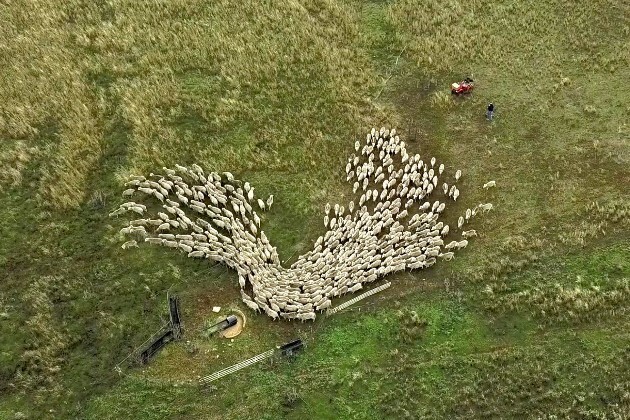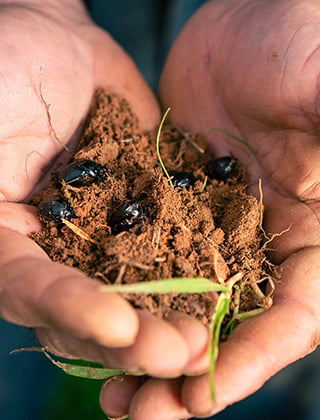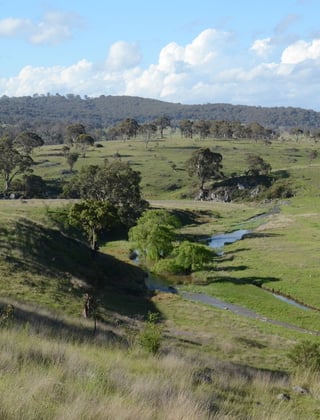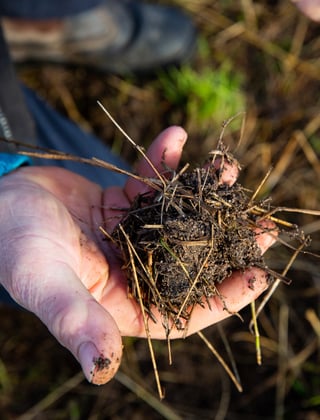Charles Massy, 'Severn Park', Monaro

Charles Massy is a Monaro woolgrower, a scientist and a renowned author, here he shares his insights on regenerative farming.
Charles Massy is a Monaro woolgrower, a scientist and a renowned author.
His classic book The Australian Merino: The Story of a Nation is the authoritative account of how Merino sheep became one of the main supports of the Australian economy. More recently, Charles' Call of the Reed Warbler: A New Agriculture, a New Earth exemplifies his own role as an advocate for regenerative agriculture.
AWI's Marius Cuming caught up with Charles to record his thoughts on this new way of farming for an episode of AWI's The Yarn podcast. Here is an abridged version of that interview.
Marius Cuming (MC): Regenerative agriculture is an interesting concept, but what you're saying is that traditional agriculture, or industrial agriculture, that has served us for so long, is now failing everyday farmers.
Charles Massy (CM): It is in some cases, yes. With the rise of modern industrial agriculture after the Second World War, we're now finding there are some long-term costs starting to emerge: what we're doing to soils, chemicals getting into our food, increasing desertification of our landscapes and getting hard pans under the cropping fields etc. But there is proof that techniques of ecological grazing and cropping and those sorts of things, particularly in the past 15-20 years, are actually leading to greater profits through better resilience and even better performance without those higher industrial inputs. So the regenerative space is really exciting and it also has all sorts of benefits for the marketing of our beautiful natural wool fibre.
MC: How have you adopted this on your own property?
CM: We've adopted over the past 20 years or so what's called holistic grazing management (developed by Allan Savory in Zimbabwe in the 1960s) which is essentially mimicking the way big mobs of African animals migrated and regenerated the soil and landscape functions and ecosystems. That's now adapted for practical management and the practice is spreading across the world including Australia. I've just been to the United States and there has been huge adoption there in the ranch country.
MC: How does this differ from rotational grazing?
CM: The techniques that have been refined really focus on intensively grazing your land with a large amount of animal density, so the animals' urine and dung and the animal impact stimulate the soil ecology. It really focuses on healthier soil function and then giving those grazed grasslands (and it can be multi species cropping etc) a lot of rest to recover and continue root development. This approach encourages all your most valuable grasses, your deeper-rooted perennials and forbs, and it builds carbon in the soil. The key thing that drives profitability in farming, both cropping and grazing, is healthy soil biology and the access of nutrients.
"What we're finding with the leading croppers now is that if you really want to drive your cropping system in a sustainable productive manner you need livestock to graze those crops because the livestock enhance the soil health. They graze the crops down, putting down dung and urine. They're walking fertilizer machines."
- Charles Massy
MC: How do you create more pasture growth from less inputs?
CM: By correct grazing and biological impacts, you are stimulating an enormous growth of soil biology and as that in turn stimulates your grasslands, you get this explosion of life. Rather than the soil being killed off and just pumped full of industrial inputs, you've got the soil biology now accessing the key nutrients. For example, in a cubic metre of healthy soil the invisible feeding tubes of the root fungus, the mycorrhiza fungi, might be 25,000km in length. Their bargain with a healthy plant environment is: the plants release sugars into the soil which feeds the fungi; in return the fungi go off and access a whole range of nutrients for those plants.
MC: How has it changed your stocking rate? Are you still running the same number of sheep?
CM: In the 1980s' five-year drought, we fed our stock by buying a lot of grain, got into a big debt and belted the hell out of our landscape, all because I kept too many animals. The shift in thinking for me as I moved across to using the flexible systems of grazing was: the key asset we've got is actually the healthy landscape, the healthy soils and land, not the animals. The animals are an adjunct to that. So our approach now to droughts and dry times is to be very responsive to what the land can carry at any stage of the season. We've got very good tools that give you two or three months' warning that things under the ground are really starting to collapse and this gives you the advantage of selling earlier while the stock is still good and the markets are still good.
"I'm incredibly bullish about the future of a beautiful natural fibre like wool."
- Charles Massy
MC: Can that work alongside for example Lifetime Ewe Management, or is it counter to that?
CM: No, it's not counter at all, because with the frequent moves and monitoring of whether your country is growing or not, the animals are on a lot more even plane of nutrition. For example, we sold some wool last year that topped the Sydney sales because of its high tensile strength, well over 40Nkt, in a drought market where there were virtually no wools like that. Our fertility hasn't dropped at all; we're weaning 115-120%, that's on joining numbers, which still stacks up as a profitable enterprise. We've eliminated a lot of our drenching because every two or three days we're moving one mob so we're not getting that worm burden.
















